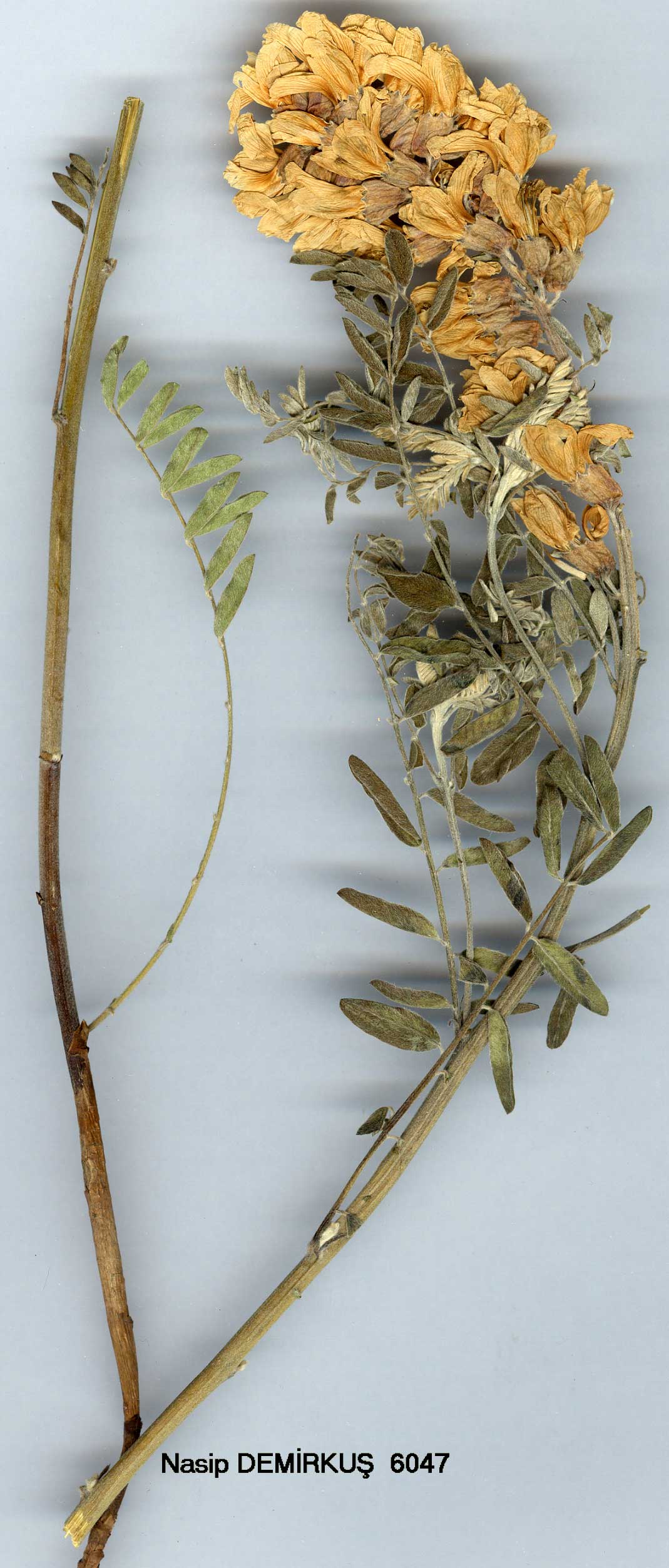| Fabaceae |
|---|
Sophora L.
|
| S. alopecuroides L., Sp. PL 373 (1753). Map 4, p. 13. Pubescent, rhizomatous perennial, 50-100 cm. Leaflets 10-20 x 5-10 mm, oblong, 7-12-paired, densely hairy on both surfaces. Inflorescence 60-80-flowered, simple. Flowers cream, subsessile. Calyx 7-8 mm, the teeth c. 1 mm, densely pubescent. Corolla 18-20 mm, the standard recurved through 90°. Lomentum 7-10 cm, 3-10-seeded, strongly contracted between the seeds. Fl. 4-7. Edges of fields, banks, rarely on sand-dunes, s. 1.-1750 m. 1. Stem adpressed-hairy, the hairs pointing upwards var. alopecuroides - 1. Stem patulous-hairy, the hairs spreading or deflexed var. tomentosa var. tomentosa (Boiss.) Chamberlain, comb. nov. Syn: Goebelia alopecuroides (L.) Bunge var. tomentosa Boiss., FI. Or. 2:629 (1872). Several syntypes from Iraq, Iran. Afghanistan &. N.W. Pakistan. E. Anatolia. B6 Malatya: Darende to Kavak Aghatsch, B. Post! B9 Van: Gürpınar (Havasor), 1750 m, D. 44588! S.W. & E. Asia. The species (which in Turkey is centred in the Irano-Turanian region) has also been recorded for B5 (Kayseri: Erciyas Da., in Hayek, 1914) and A9 (Kars: Aras valley nr. Kağizman, Grossheim 5: map 179). Var. tomentosa largely replaces var. alopeciiroides in Iran and further east, but mixed populations do occur. This species somewhat resembles Astragalus lusitaniciis in facies. |
 CHAMBERLAIN _jpg.jpg)
 CHAMBERLAIN _jpg.jpg)

 CHAMBERLAIN _jpg.jpg)
 CHAMBERLAIN_jpg.jpg)